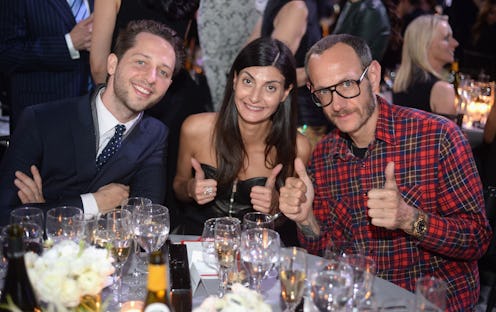Fashion
Terry Richardson Speaks Up, But It Doesn't Help
Terry Richardson's name is synonymous with controversy. Even those who can barely name a single fashion photographer are familiar with Richardson's alleged sexual harassment of models and his questionable conduct during photo shoots. But as the result of a recent upswing in grievances against the photographer, Richardson agreed to sit down with The Cut and explain his side of the story. Honestly, however, the interview leaves readers with more questions than it answers.
In addition to compiling a meticulous history of Richardson from childhood through his illustrious career, the publication allowed him to present his own case with regards to his work ethic, and to clarify the numerous incidents which have caused many fashion industry notables to revoke their favor. However, Richardson's vague, unapologetic responses suggest not only a personal lack of ethics, but also larger concerns with regards to the fashion industry's moral compass.
Though the writer, Benjamin Wallace, paints a portrait of Richardson as an enthusiastic photography devotee looking to make his mark on the art world and bend the rules governing society, certain pieces of Richardson's story don't support this optimistic image. Richardson elaborated when asked about his work ethic,
Going into a shoot not fully knowing what I want to do — that excitement, that thing that happens, is just so powerful and makes such great pictures.
However, this gleeful account of his artistic process is negated by a comment Richardson made in a previous interview with Vice Magazine in 2002. The photographer recalled an ad campaign he executed for clothing brand Supreme, telling Vice of his goals for the campaign and the events of the day:
to put together a calendar you could jerk off to. [The shoot] got a bit out of hand by the end. The woman producing the shoot got freaked out and had to leave. I think every person there fucked someone. It was intense.
While I suppose it is potentially commendable for Richardson to adopt a policy of transparency on how raucous the shoot became, the impetus behind the shoot is quintessentially offensive, as is the fact that the shoot's producer, a professional by all accounts, was so struck by the debauchery that she was forced to depart. There is a fine line between acting in the name of artistic inquiry and committing an act which masquerades as creative while fulfilling personal desires, and when an individual's rights are violated as a result as has reportedly been the case with several of Richardson's subjects, the excuse simply doesn't hold water.
Fashion and other artistic pursuits may have less defined perimeters for what is ethical and acceptable, as by nature, art is supposed to appeal to the imagination and push boundaries. However, the golden standards of human conduct remain despite more fluid concepts of what is acceptable. If a high school teacher organized a study group to prepare for a final exam and encouraged his students to disrobe to increase the effectiveness of the session, he would be immediately discharged with a note on his employment records outlining his misconduct. Richardson has openly acknowledged his tendency to do the same, and though several of his subjects were in fact minors, it has taken years of allegations to convince a handful of companies to cease working with him.
Furthermore, Richardson explains that he was not alone while photographing his subjects, and the shoots were clean fun, insinuating that if there was something wrong with his actions, fellow shoot attendees and the model herself would have been welcome to step in.
It was never just me and a girl ever. It was always assistants, or other people around, or girls brought friends over to hang out. It was very daytime, no drugs, no alcohol. It was a happening, there was energy, it was fun, it was exciting, making these strong images, and that’s what it was. People collaborating and exploring sexuality and taking pictures.
Anyone who has attended a middle school bullying lecture can attest that peer pressure is alive and well beyond the school yard, especially when one is an aspiring model working with one of fashion's most esteemed photographers. And despite the conflicting he said/she said accounts of Richardson's shoots, the sheer number of models who have come forward with reports of his discomforting antics speak to a larger issue in fashion: The treatment (and mistreatment) of women. And the troubling tales of debasement behind some of Richardson's racier images, which present young models demeaning themselves, suggest that the photos are not simply commentaries on modern society or expressions of empowerment and liberation for women, they are in fact suggestions for how women should behave in the presence of powerful men.
In reality, it is impossible to know definitively what acts of misogyny or misconduct Richardson has committed, but if Richardson was looking to discover just how far he could push the boundaries of fashion photography, it appears he found the line and kept right on going.
Image: Giphy
